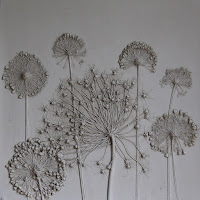In
Egypt, private schools have proms similar to ones held in the USA but with slight differences. The prom is held for a maximum of 3 hours, where teachers attend and enjoy some time with their students. Then there is the "after-prom", where no teachers or parents are allowed, during that time, the real party begins with all the students dancing and enjoying their time. The after prom can continue to 4 am and 5 am.
In
South Africa, the equivalent of the American prom is the
Matric Dance, taking place during the matriculation year of high school . It takes place towards the end of the third quarter, shortly before the spring break, after which the matriculation examinations commence. It usually takes the form of a formal dinner and dance. In most schools, the 11th grade class is responsible for arranging the event. Sometimes teachers and parents also attend.
In
Hong Kong, prom culture is inherited from the western countries and is generally called ball, such as Christmas Ball. This usually takes place during Christmas and Summer Break. This is more popular in the secondary education stage rather than in universities. Schools, apart from international schools, holding proms are usually single-sex school where normally the Student Unions in the schools will cooperate each other in organizing the event. In recent years, more and more individual unions got united and formed different student unions associations so as to organize large-scale events including large joint-school proms. Except those proms within the academic field, there are also adult proms for charity yearly where celebrities and government officers always go to these functions.
In
India and
Nepal, the equivalent to some extent is a farewell party or farewell gathering. The outgoing students are given a warm send-off by the junior students and staff. All the seniors are felicitated with souvenirs and superlatives are given awards.
In
Israel, high school graduation parties usually combine a play and a humble ceremony, followed by a dance party. In the past years, influenced by American culture, more and more graduates decide to hold a private graduation party similar to the American prom, with dress code, prom dates, limousines, and prom kings or queens, although usually not supported by the school.
In
Lebanon, proms are held after the graduation ceremony at night. They are usually held at hotels with a formal dress code, prom dates, rented cars and, occasionally, prom kings and queens.
In
Singapore, proms are held at the near end of a senior year for secondary schools. Proms are normally held after the final examinations of all senior students before graduating.
In
Malaysia, proms are gaining in popularity, especially in the bigger cities. However, these gatherings are usually organized by students, and the school administration is not involved.
In
Pakistan, the equivalent to the American prom is a farewell dinner or farewell function that takes place at the end of the college academic year. In a farewell function, one girl is appointed “Lady of the Evening”, and one boy is appointed “Gentleman of the Evening”.
The
Swiss equivalent of a prom is the
bal de printemps.
Literally translated, this is a "Spring Ball." At some schools in the German speaking part, it is called "Maturaball." This is not always organized by the schools, but sometimes by a student's committee. It takes mostly part before the final exams.


































